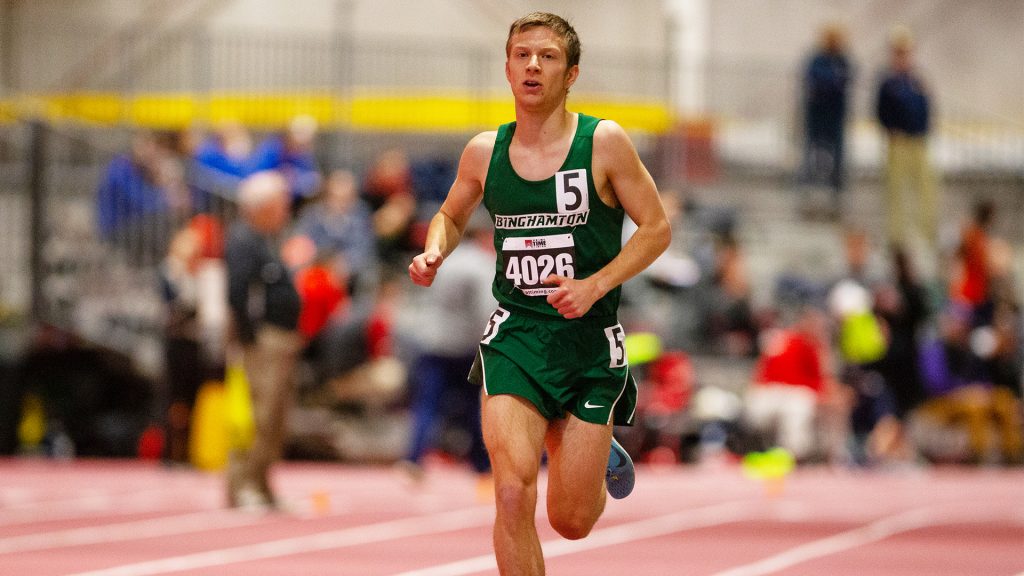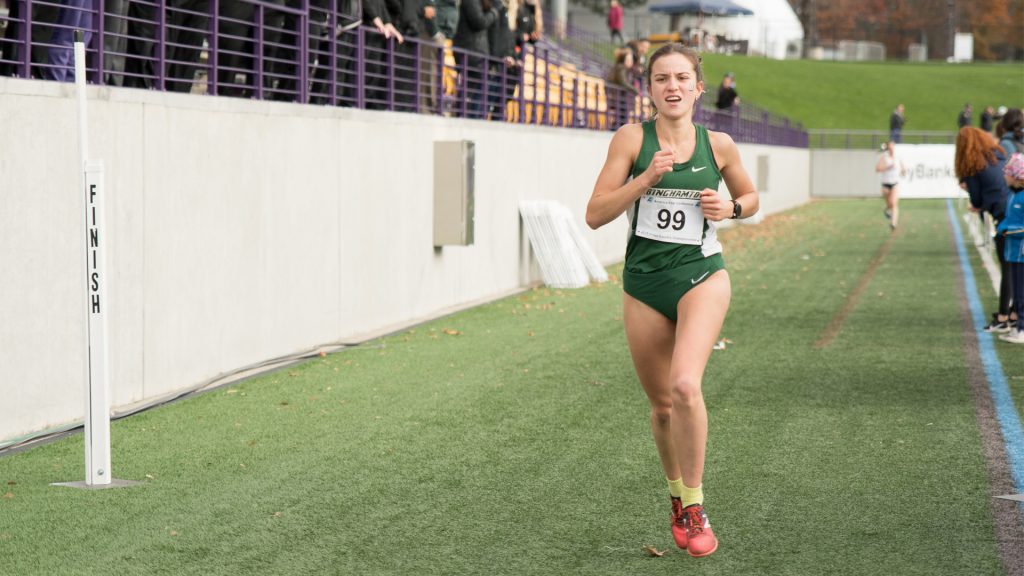
Last month, the NCAA Division I council made the decision to push the start of college cross country back to Jan. 23. However, with the winter track and field season still scheduled to kick-off around the same date, both athletes and fans remain confused by the fate of both sports in 2021.
“A lot of coaches and officials are saying that indoor track is looking less and less likely,” said Binghamton redshirt junior Dan Schaffer.
Since track and field distance events draw from the same pool of athletes running cross country, holding both sports simultaneously does not seem plausible. Additionally, runners would be forced to compete in the middle of a Northeast winter, as opposed to beginning in the mild fall weather and transitioning into the November cold.
“I always go into the mindset that all competitors have to deal with the same conditions,” Schaffer said. “You have to accept the conditions for what they are and realize that everyone is battling them and doing their best to perform.”
Regardless of cross country’s fate come winter, the Bearcats still train as though they are competing while following COVID-19 safety rules and regulations. Runners are required to wear masks, but on more difficult training days, most athletes space out far apart and only put on a mask when passing by other people. Easier days require less spacing and only permit mask wearing when runners are not socially distant in their small groups.
“We’re training in our small ‘pods’ together and training similar to what we would do during a normal fall,” Schaffer said.
Junior Aziza Chigatayeva, who placed fourth at last year’s America East Women’s Cross Country Championship, sat out for winter and spring track due to a hip injury.
“It was apparently something that was going on for a long time, it just took the first year of collegiate running to bring it out,” Chigatayeva said.
Just as Schaffer did last year, Chigatayeva likely would have had to redshirt this year’s cross country season, regardless of COVID-19 concerns.
“It was very perfectly timed for me,” Chigatayeva said. “For other people, it was really sad because this might be their last cross country season.”
While the athletes are optimistic, the plausibility of an entire cross country season being held in the winter still presents a challenge. Since poor weather and trail conditions may pose a threat to cross country runners hoping to set new personal records, spring seems to be the next big season for track and field competitors hungry to perform at the highest level.
“For outdoor, I do want to run faster than I have in the past, and I just want to be healthy,” Chigatayeva said. “I think I can run next spring and be pretty fast, but only time will tell.”
Some factors still need to be clarified regarding both track and cross country. Track and field can accommodate for COVID-19 regulations by using multiple heats and runners in distanced lanes, but cross country often begins with runners in a large pack. It is unclear as to how these races will start given social distancing guidelines. The indoor track season might be on the chopping block, but the NCAA has not released any information about whether or not indoor track will be canceled or what adjustments will be made to accommodate the overlap with cross country.



